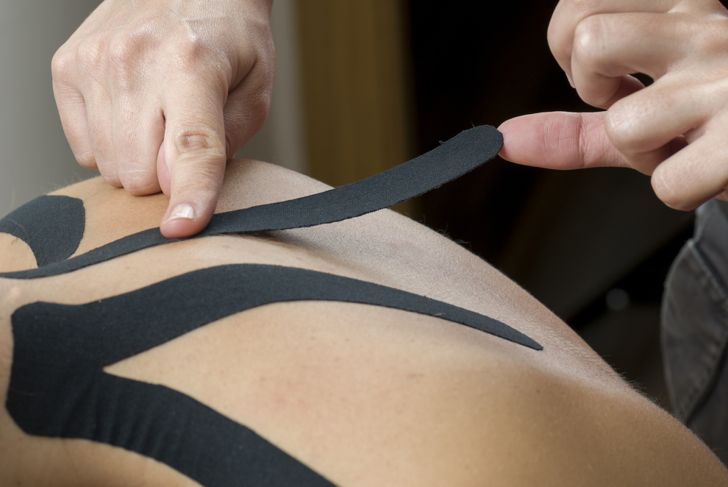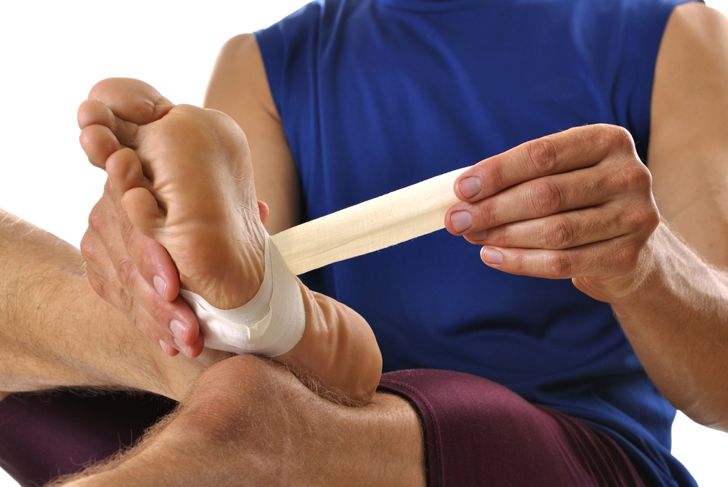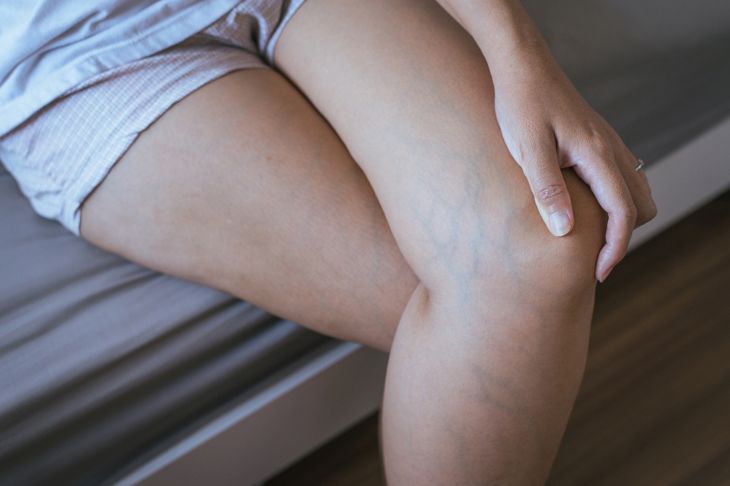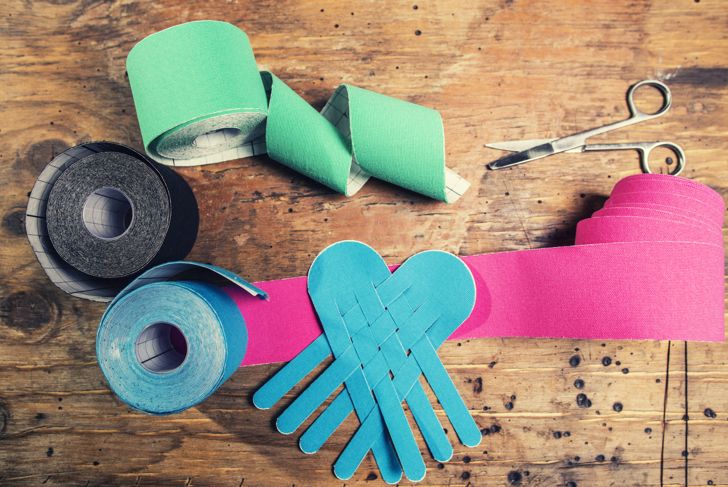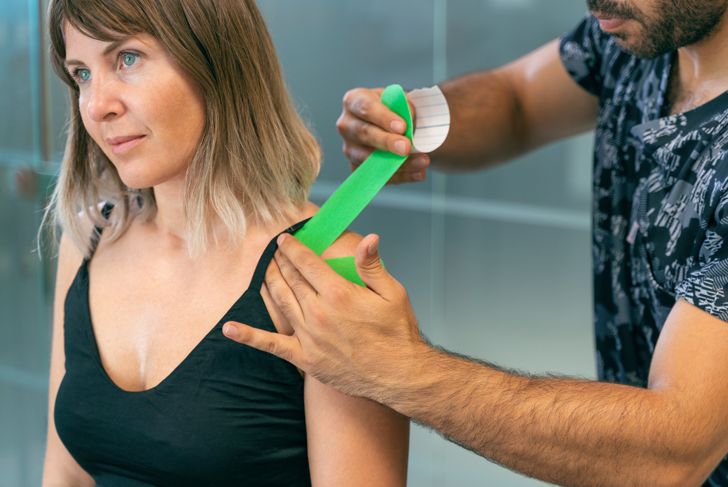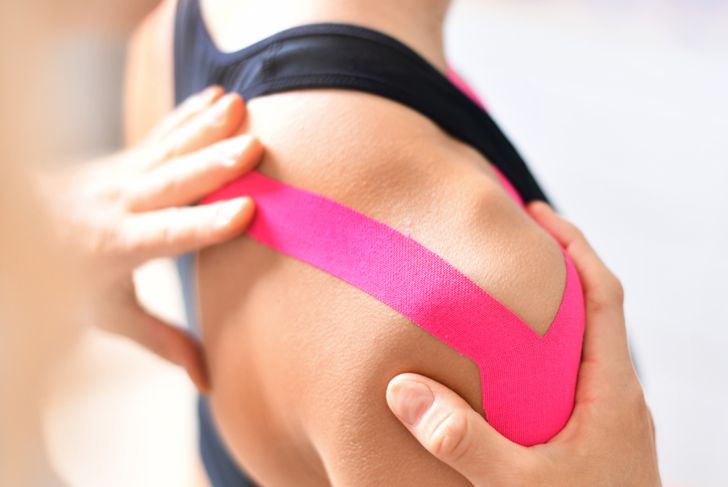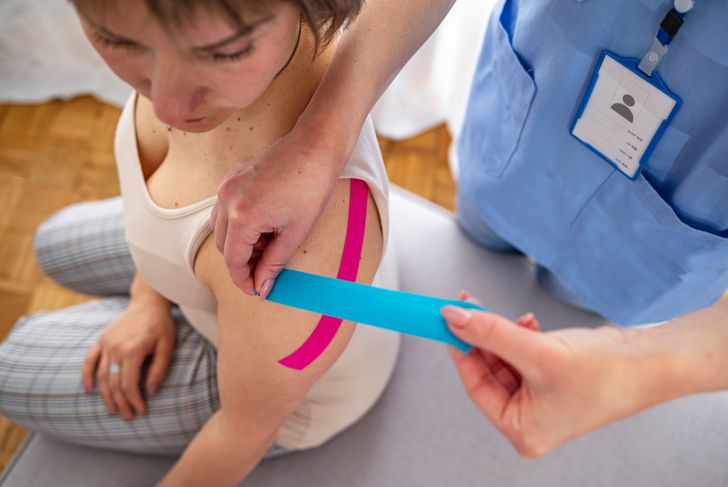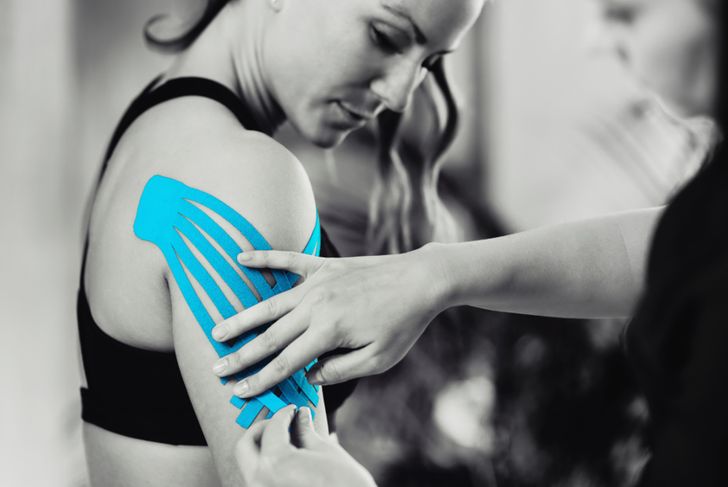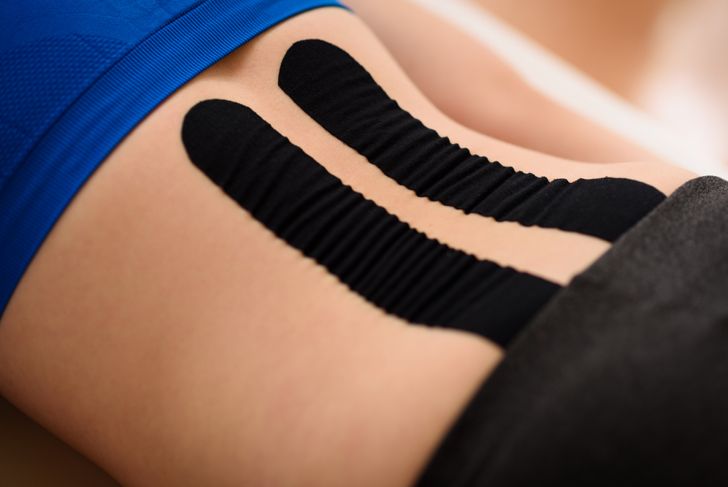Developed as a therapeutic treatment option, Kinesio tape has found widespread popularity with professional athletes and weekend warriors alike. Also known as kinesiology tape or KT, Kinesio tape has various purported benefits including reducing muscle fatigue, pain, edema, and delayed-onset muscle soreness, speeding healing, and encouraging blood flow.
How To Use Kinesio Tape
The exact placement of Kinesio tape depends on the location you are hoping to treat. The application instructions, however, are generally the same. The skin should be clean and dry before applying the tape. Apply it at least an hour before you begin your workout or activity to allow the adhesive to fully bond to the skin.After applying the tape, use your bare hands to rub up and down the length of the tape. This warmth encourages better adhesion.
Alternatives To Kinesio Tape
Kinesio taping is not the only type of taping available. The most common is using white athletic tape to stabilize an area. This method has no therapeutic value, it is simply used to provide support for a weak or injured area.The McConnell taping method is used to brace areas that can benefit from retraining movement patterns. The process uses a rigid cotton mesh tape to treat shoulder subluxation, hip impingement, patellofemoral syndrome, and other health conditions.
Who Can Benefit From Kinesio Tape?
Anyone who experiences pain in a specific area or has a soft tissue injury may benefit from KT. Regardless of the body part, chances are there is an effective way to tape it. Kinesio tape isn’t limited to athletes either; those who work in physically demanding careers, individuals who spend too much time sitting during the day, and older adults with degenerative joint disease can all find relief from taping.
Who Should Avoid It?
Kinesio tape isn’t for everyone, however. If you have experienced allergic reactions to adhesives in the past, you may have a reaction to this tape. You also should avoid KT if you have deep vein thrombosis, which is a blood clot in the arm or leg, as taping may dislodge the clot. Finally, never apply Kinesio tape over open wounds or infected areas. Use it only on unbroken, healthy skin.
Choosing Kinesio Tape
There are different types of Kinesio tape. Several brands make the product, and each offers a few different types. You can find Kinesio tape in 1″ and 4″ width rolls, in pre-cut strips that work well for particular body parts, options with gentle adhesive for sensitive skin, and varieties with extra-strength adhesive, which is great for long, sweaty workouts and water activities.
Basic Application
KT tape is used differently depending on the part of the body you are applying it to, but the initial steps are the same. Peel the backing from one end of the tape. Don’t remove the entire backing, just the first few inches. Place it on the skin without stretching the tape. Rub vigorously to help the tape adhere.Stabilize this end with your hand while applying the rest of the tape as desired, removing the backing as you go. Apply some pressure so you are stretching the tape as you apply. At the end of the tape run, release the stretch. The final two inches of tape anchors the product and should not be stretched.
Y-Tape Application
One of the most common applications, the Y shape is used to surround and support a specific muscle. The tape should be about two inches longer than the muscle you are targeting. The Y shape comes from one piece of tape, which you cut lengthwise down the center for about half its length.Apply the stem of the Y directly above or below the muscle, and run the arms of the Y along either side of the muscle.
X-Tape Application
The X-style application is often the best choice for muscles that have multi-directional mobility, such as the upper back. X-shaped application is exactly what it sounds like: with the crossover being placed on the most sensitive spot. This placement is great for covering large areas and treating multiple joints.
Fan Placement
Fan placement is most often used for edema. The design is meant to minimize pressure and encourage lymphatic draining. The fan is created by cutting the strip of Kinesio tape longitudinally three times, leaving the final 2 inches uncut. This gives you four narrow strips that fan out from the solid base.
I Placement
Best for acute injuries, I placement can help minimize pain and swelling in the area. I placement calls for a single piece of Kinesio tape placed directly on the affected area. It is commonly used to support the quads, glutes, rotator cuff, or Achilles tendon.Office workers can also benefit from I placement, using it along the middle and lower back to encourage proper posture.

 Home
Home Health
Health Diet & Nutrition
Diet & Nutrition Living Well
Living Well More
More